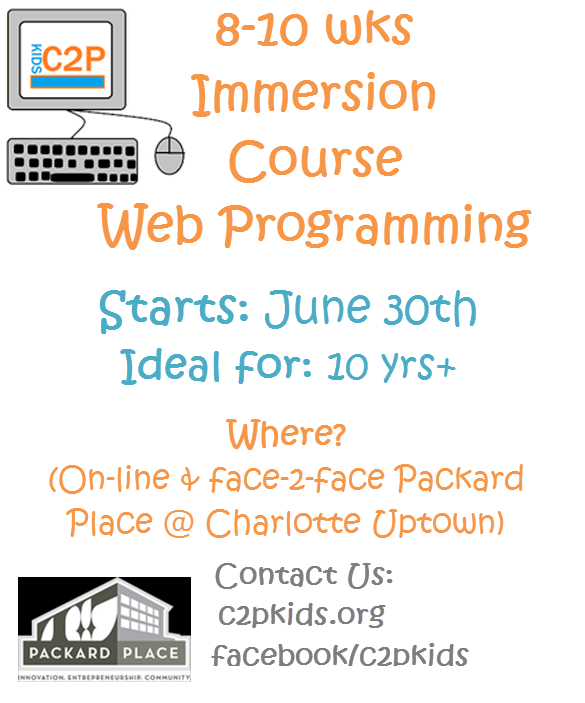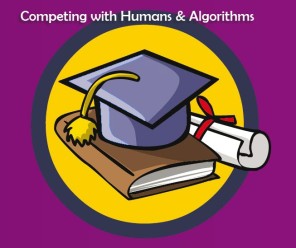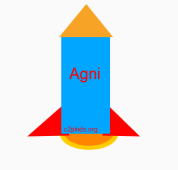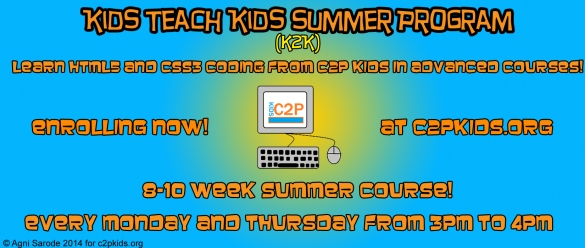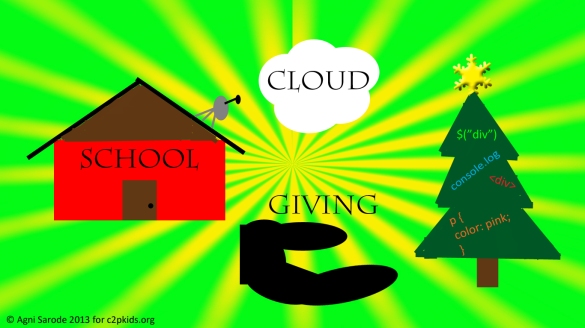Readying our kids to compete with peers – humans and complex algorithms
An interesting (and later a bit scary) thought dawned upon my morning commute to drop my son to his bus stop. I was doing the usual concerned dad thing, inquiring him how he thought he was doing in his class relative to his peers. I was asking him about who his toughest peers were and what unique advantages they had in terms of intellectual (hard skills) and emotional (soft skills). I was after all trying to set some healthy competition in him and see how he evaluated his peers.
The conversation ended quickly with his drop, but it gradually hit me that by the time he joins the workforce, his peer competition will be humans and complex computer algorithms. In advanced college years, students are making significant time and economic investments in choosing courses that they are passionate about and that simultaneously have the best career outcomes.
A decade back the conversation in leading western economies was that simple, repetitive & low value work goes to developing nations—known as east economies. High value, complex, high touch, and high emotion work gets done in western leading economies, therefore student decisions a decade ago, were then driven by what humans in western world, can & cannot do compared to humans in eastern world.
In current state of global work force distribution, much of that skills delta is erased and arguably the playing field is leveled, but again we are comparing what can humans across different geographies can do, and associated demand-supply by geography.
In another decade or so, computer algorithms will be a formidable new addition to global work force choice. It is not a net new idea itself, but we will definitely have a new class of complex computer algorithms which can do highly complex, non-repetitive, predictive and emotionally aware work—something that has been forte of highly skilled, educated & judgment savvy experienced humans.
Channeling & inspiring kids to finish college and getting higher education is not enough. Career decisions of future need to be savvy to figure out what is that these new species of complex computer algorithms can’t do and hence humans will be still relevant (and needed).
Early school career’s counselling needs a massive upgrade—they seem to be focused on extracting what a student’s core passion and excellence lineage is and then based on that they map potential areas to build career in. Nothing wrong with starting with a student’s passion first; after all if you love what you do then work will not seem like work and one will a have fulfilling career, but then what you are passionate about should be still a relevant career choice available for humans and not taken over by complex computer algorithms.
Student Showcase: Rocket Launching (c2pagni)
Rocket Launching
This is a little program assignment we had to do in one of the jams. This is the completed version of it. It is an animated rocket and is was built using JavaScript and Processing.js. Enjoy the launch! If you like it, give us a vote!
Launching new Kids-teach-Kids Summer Program for HTML5 and CSS3
Summer is here and its a good time to get kids into coding grove. We are starting a new summer only Kids-2-Kids program in which C2PKids in advanced levels will teach HTML5 and CSS3 using C2P materail curated from codecedmy.com, w3cschools.org and projects built by c2pkids coaches who are practitioners in industry.
The program is unique in sense that it will be guided and monitored by adult coaches but delivered by other C2PKids studying advanced stuff. This creates interesting internship opportunities for c2pkids in advanced curriculum all while addressing shortage of skilled coaches to teach coding for free.
Tentative start date June 19th @ 3:00p.m on your PC
If you have additional questions please use contact us form below with your questions:
What should Public Schools Teach? Vocational OR Fundamental Computer Science.
Well currently they don’t teach either (at least majority of Public Schools in US). I was listening to this NPR Story from this morning about the state of Computer Science (CS) education within Public Schools in US. Their is debate and growing angst on how little Public Schools do to teach Computer Science while the experts project how many unfilled computer science jobs will stay unfulfilled.
Lets assume if policy is fixed and Public Schools do decide to teach Computer Science but what should they be teaching in computer science curriculum. I think there is wide confusion between vocational Versus fundamental teaching of CS. Teaching a particular language or toolkit in CS is really vocational teaching geared towards a particular outcome –build skills for specific employment , job role or deploy them to actually build/solve a particular problem.
With shelf life in technology being so short, Public Schools should concentrate on non-vocational focus & teach basic design skills & logical thinking. IMHO, Public School should focus on reasonably stable and perpetual CS ideas like Turing Machine, Algorithms, Data Structure, How Internet Works etc. They need to focus on making theses dry & seemingly uninteresting ideas entertaining to learn for kids. For e.g. here is intro from Thinkersmith.org –very interesting way of teaching logic without use of computers. See the intro video below:
Expecting Public School CS teachers know latest and greatest difference between HTML 5 & CSS 3 over prior version or latest way to build mobile apps tricks seems like a stretch goal for Public School Teachers who are already burdened to do more with less (pay). I think vocational enterprises (non-profit or for profit) are best tuned to keep up with latest and greatest in languages, platforms and toolkits. Non-profits can use grant power & SME volunteers while commercial enterprises use power to pay qualified teachers for covering this gap.
Is giving on your mind?–Consider giving Tech Skills this holiday season.
Image Credit: 2013 Agni Sarode @c2pKids.org
Its this time of the year when your conscience gets challenged every time you enter the grocery store & are greeted by an ever cheerful Salvation Army guy looking for you to make some “giving” contribution for those who are in “need”.
There are many forms of “giving” —-“teaching” can be one of the most rewarding & fulfilling things to give this season.
C2PKids.org started as a simple side project this summer. Today we have 2 clubs launched within 3-months of start of our first club (in late sept 2013). We have made enormous strides in liberating the physical location dependency for kids and volunteers to take up a C2P club. Kids and Coach volunteers need NOT to be in same geo-location & even in same time zone. So location is no longer a prohibitive factor to consider C2P. As testament to this–first club (aka Batch 1) has kids & coaches that are separated by both timezone and cities ( 800 miles between Charlotte , NC and Bloomingdale, Illinois). While C2P Club of RTP-area (official name C2P Glenkirk Pros) has club members separated in cities of Cary, NC and Charlotte, NC–some 200 miles.
We are also not gated by content or curriculum course ware. Focus on Ed-Tech has created many teaching platforms for computer science–from Khan Academy, Codecademy, AppInventor, W3CSchool etc. So much of teaching content and teaching tools are now already available online that we have been able to quickly create a “course in a box”—based on student levels , teachers interest and style of teaching.
While we are no longer gated by location and teaching content but we are constrained by number of skilled volunteers who can coach C2PKids clubs. Too much focus & promotion on learning to code (thanks to recent Hour Of Code event ) has a created massive interest to take up coding early on, but we now need to focus on finding people who can teach. In the end there is no escape from the human element of teaching—field experience , wisdom around choice, design skills and motivation/encouragement.
An Appeal
All my tech friends on Linked & Facebook –1st degree through 3rd degree , please seriously consider giving of different kind this season. Give your technology experience and wisdom that you have acquired over years–be a C2PKids Volunteer Coach.
Top 5 reasons to be a C2P Club Volunteer Coach
- “Getting” more than “Giving”
Technology is constantly changing. Trying to teach elementary and middle school kids technology involves interesting learning experiences. You will come witness new Gen-Z behaviors, attention spans and you learn how these Gen Z kids learn from each other. Kids learn from short videos while you might have learned from massive manuals. Your own tech skills will get updated. You will be able to learn new trends and tools which you can apply at your work (and brag and look smart :)). - Corporate IT Boredom
Are you someone who want to do more or try out new cool stuff but are held back by typical corporate technology hurdles? At C2PKids there are no preset rules and approved-only technology stack to use. C2P Batch1 club did its first project on Cloud IDE called Codenvy.com. The idea to use Codenvy.com for shared development came out kids stepping on each others work. We ended taking a detour to solve joint code development problem and choosing a tool that fits behavior patterns of these kids and which is also free. Another example, is building mobile apps–so many choices to build an app– which one is fastest and cheapest?–AppInventor. - Flavor of Entrepreneurship
Entrepreneurship is adventurous and unpredictable. Running a C2PKids club is exactly the same way. You will run into kids and parents of varying levels and reasons for sending kids to a C2PKids club. The entire process of planning and commissioning a club is nothing short of running a miniature start-up. - Bragging and Networking
Education Tech and Civic Tech are very hot fields and lot of public , private and philanthropic initiatives intersect in this space. Being a C2PKids Volunteer coach opens up lots of networking opportunities in your immediate locality or your expanded region. Not to mention all the bragging rights you get 🙂 - Relevant for your house-hold
In addition to being a high flying tech professional, if you are also parent with abundance of technology within your household then C2PKids movement will be very relevant topic for your house-hold. You may have had failed attempts at getting your kids excited about technology when you dealt with them individually. Teaching them in a C2P club changes the dynamic. Peer dynamics brings different results with your own kids versus you trying to teach them individually.
Please contact me if you would like to engage into C2P Style of Giving.
What can broadband + collaboration tools + light encouragement do?
Its about 7 weeks since we first started Jammin with the very first Batch of c2pKids.org. Batch1 has an interesting profile – 2 alternating coaches, 4 kids, 2 time zones, kids-n-coaches from 2 separate states (NC & IL) & kids from 3 separate schools. All of these differences close out every Sunday sharp @7:00p.m. EST on Google Hangout. We took our first break after 7 consecutive weekly Jams. We learned a lot along with kids participating in these Jams. One concrete thing that we learned (rather witnessed) is the future of learning and how it is rapidly changing. As we ( I and my buddy coach Hemanta) tried our hands at teaching, we realized how much we had to learn to “unlearn” how to teach and instead just coach.
The role of teacher is gradually un-bundling and becoming one of a coach, no different than a soccer coach. The traditional teacher is gradually having to move from the front of white board and is having to move on the sides —so kids can watch a highly immersible and targeted video delivering a near perfect instruction for a chosen topic. The teacher is now really a coach to summarize that targeted video and to add more color from his/her experience to the topic. Beyond this , the coach (aka former teacher) now has to set up a problem and strategy to solve it–very much like a soccer coach explaining each players the game, the position basics and how to execute the game strategy. After that, our coach, is once again on sides–letting the players execute the game and watch them either struggle or succeed with the planned strategy.
As we tried to get our Jams operational , we struggled to get up the learning & productivity quotients of our Jam sessions. Our course content is from Codecademy.com, so we resorted to their teaching resource kits as our best practices guide. However, we had limited success following their advise, as much of that advise was hard to apply to our virtual Google Hangout based learning experience. I am sure that advise will do magic for After School In-person setting.
It was around this time we ran to this very interesting and inspiring work done by Sugata Mitra (a TED Prize Winner) –on Building School on Cloud. Here was a career educator , a Ted Prize winner and someone who had applied very statistically rigorous methods in studying some of the same teaching ideas that c2pkids.org (aka Jam Method) was flirting with. Sugata codified his work into a methodology called SOLE (Self Organized Learning Experience). As I kept on studying SOLE , I kept on realizing that JAM and SOLE had so much of a common DNA…the ONLY difference was SOLE was creation of a career education scientist while JAM-method was an improvisation of c2pkids coaches when they failed to attract enough local interests in parents to send their kids for an in-person face-2-face after school coding program. Sugata’s SOLE-ideas inspired and validated many assumptions that c2pkids coaches were making. JAM method started appearing more of a specific application of SOLE-philosophy–viz teaching kids to code. We had concluded that c2p Batch size should not be more than 4-5 kids per batch–based on technology limitations , kids maturity and overall experience that we could support.
Like SOLE, our success is based on volunteers –we are trying very hard to devise a model in which volunteer coaches find teaching c2pkids enriching and learning experience. We are happy to inspire more kids , parents and more parents who wish to volunteer to start their own c2pkids Batch with few kids from their own community , home and blend with other kids from distant. We are very close to launch 2-3 more batches by Dec-January time frame.
Net-net: unknowingly, we had adopted SOLE philosophy . So –What can broadband + collaboration tools + light encouragement do?
For c2pKids.org’s Batch-1, in 7 jams, we are witnessing kids showing some early signs of producer kids. Our Batch1 kids understand how to learn , collaborate , decompose work online. They know etiquette of participating in a Hangout, they know how to write minutes of meetings, they know how to track and integrate work done in a distributed mode.
They are experiencing the Future of Learning & Working on Cloud. Thanks for reading this far.
C2PKids.org proud to promote computer science education week

It’s a one-hour introduction to computer science, designed to demystify “code” and show that anyone can learn the basics to be a maker, a creator, an innovator.
We’ll provide a variety of self-guided tutorials that anybody can complete, with just a web-browser, tablet, or smartphone. We’ll even have unplugged tutorials for classrooms without computers. No experience is needed.
Watch this “how to” video for more information.

Please contact us if you would like to host a “Hour of Code” event in your school or your community. Use the following form
If Internet was a country then how would you measure its GDP?
Well, I don’t know–hence I asked Google Now. After reviewing the results, I realized that much of the conversation around this topic was not really directly tackling this question but another related and important question as to How does a country’s GDP get influenced by contributions from Internet Economy? Their is acknowledgement on growing influence of Internet Economy on country’s GDP but the debate about how that influence is measured is yet to be settled. Either way, getting back to my hypothetical question about treating Internet like a country and attempting to measure its GDP –this weird thought came to my mind as I reflected on a recent NPR story about a recently release book Average is Over by Author and Economist Tyer Cowen. The central theme of this book is all about income inequality (in America) post-recession and elimination of mid-range jobs and rise of high end high paying jobs that need skills to exploit machine intelligence and will need innate skills in ability to make sense of massive amount of data getting generated. I am yet to get my hands on to the book but had the pleasure of listening to NPR interview live. I was intrigued by Tyer Cowen’s hypothesis on top 1% expanding to become top 15%, about how Internet powered with machine learning and precision-level data (about niches about all things and people connected to Internet ) will have a leveling effect on people with skills-n-will and geography will no longer be a barrier for success. In fact more people will have a shot at making it into the top 15% than before–thanks to crowd funding, viral videos stars, viral app-creators, unbundled free online educational content from Stanford to MIT and human resources pools optimized by crowd sourcing platforms.
The more I reflected about Tyer’s hypothesis the more I felt it was hardly about a nation called America. I kind of felt it was more about the nation called Internet. The Internet is really a nation connected with all kinds of stuff, things. data, devices and most importantly people. Most physical countries will be exporting and importing from the Internet Nation. When more developing, curious, younger and hungry physical nations join the Internet Nation—some very specialized , high paying jobs from Internet Nation will become commodity–creating opportunity for more innovation for within ones in top 15% and ones outside of top 15%. Staying in top 15% will become difficult unless we learn to continually learn till we retire out of Internet economy.
Hopefully, by then someone will figure out “If Internet was a country then how would you measure its GDP?”
We’re jammin’, jammin’, And I hope you like jammin’, too.
![Jammin' C2P [FIXED]](https://c2pkids.wordpress.com/wp-content/uploads/2013/09/jammin-c2p-fixed.png?w=1440&h=960)
Image Credit: 2013 Agni Sarode @c2pKids.org
Well those are not my words but are from the lyrics of famous Bob Marley Song Jamming.
So what has Jamming got to do with C2PKids movement?—actually a lot. Many parents have been quizzing me on what exactly we teach in C2PKids, how we teach, what’s our teaching methodology blah blah ! But before I explain the teaching methodology @C2PKids –let me attempt to explain the teaching philosophy @C2PKids by introducing a common concept in music called Jam.
Wikipedia:
A jam session is a musical event, process, or activity where musicians play (i.e. “jam”) by improvising without extensive preparation or predefined arrangements. Jam sessions are often used by musicians to develop new material (music), find suitable arrangements, or simply as a social gathering and communal practice session. Jam sessions may be based upon existing songs or forms, may be loosely based on an agreed chord progression or chart suggested by one participant, or may be wholly improvisational. Jam sessions can range from very loose gatherings of amateurs to evenings where a jam session coordinator acts as a “gatekeeper” to ensure that only appropriate-level performers take the stage, to sophisticated improvised recording sessions by professionals which are intended to be edited and released to the public.
C2P Jams
C2PKids teaching methodology is heavily influenced from the idea of musical Jams (as explained above). The core concept is we conduct weekly Programming Jams. These Jams are preceded by pre-Jam study material/course ware practiced by students during the week or over week-end before the Jam. The basic assumption is that for Jams to be successful , students will need to be brought to an appropriate level of knowledge before he/she can join a C2P Jam. Like in music, we have Jam session coordinators—they are C2P volunteer coaches (and optionally assisting coach). Jam is designed by industry experienced coach to horn a particular topic, expose students to a way of working or designing technology and is usually designed by extracting something from real world that looks like microcosm of real word technology problem. We are lucky to be in times when collaboration technology is at such sophisticated state that I see most Jams taking place online—crushing distances, time-zones & access barriers between a hungry student and a passionate coach. C2PKids Jams are organized as Google Hangout Events.
Having emphasized on on-line Jams, I take it very seriously that an “in-person” Jam opens doors to a very interesting local economic impacts. With ‘in-person” Jams, I expect to see new friendships formed on basis of common love for technology and opportunity to form future startup teams. Charlotte, NC is probably best known as a Banking town not a high-tech start-up town. I live in Charlotte and love it. I feel that it has some great comparative advantages (relative to big daddy startup hubs like San Francisco, NYC, Boston, Seattle) to be the next high-tech start-up town. But more on that topic some day later—but bottom line is that if we are able to create a pool of technology producing generation of kids then Charlotte could find it’s place on start-up map (and venture funding follows, other economic windfall effects).
Pre-Jam materials:
At C2PKids we refer to a range of online course-wares (Codecadmy.com, W3Cschool.com, Computing Platform of KhanAcademy.org & many more). At this point I don’t see any point in favoring one course-ware platform over other—all of them have unique advantage and they specialize in different things. Like real world technology project execution, we refer to all as and when the topic demands it.
If you have realized by now then C2PKids teaching methodology is really a blend of Hackathon + Flip teaching methodology. Jams are nothing but extended duration Hackathons of lower intensity levels adjusted for 10-15yrs while Pre-Jam self-study sessions are Flips.
The following schematic (click it for larger view) should bring all of these ideas together in concrete manner—if not feel free to drop me a note.

